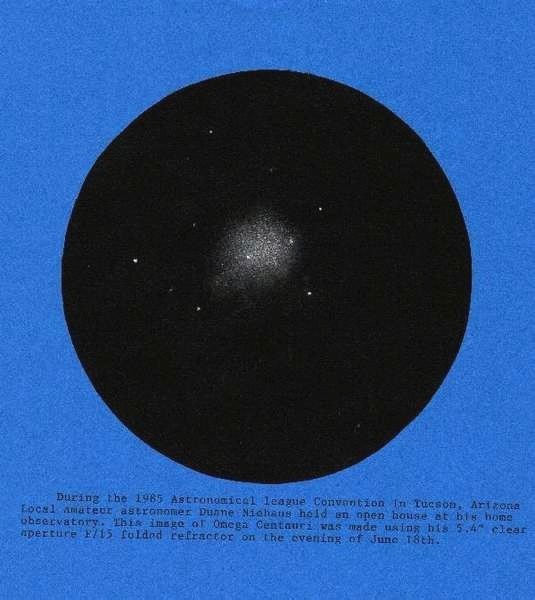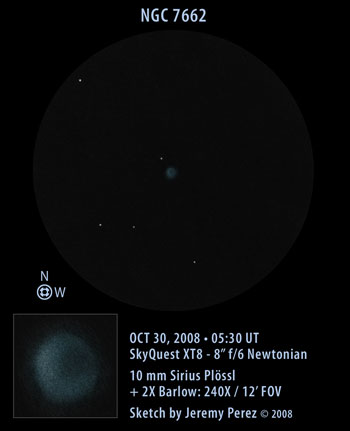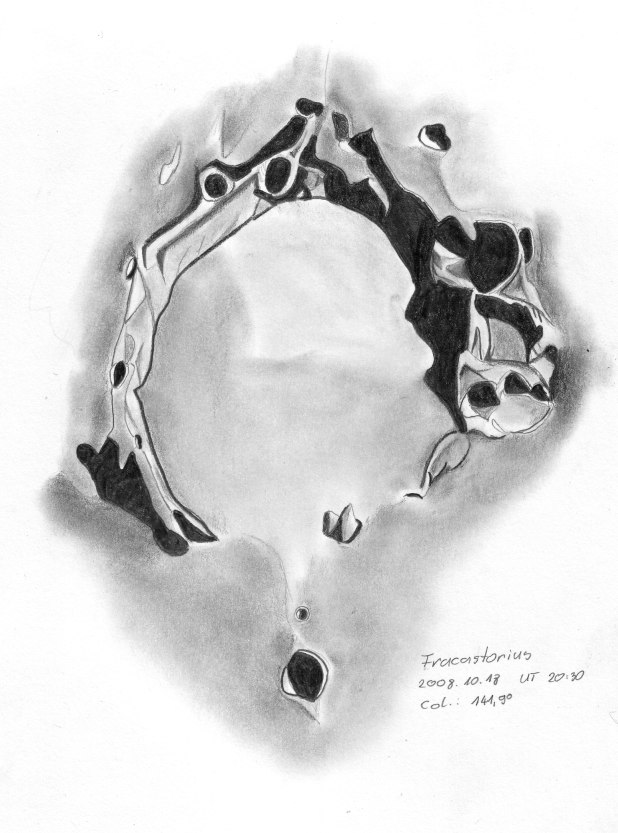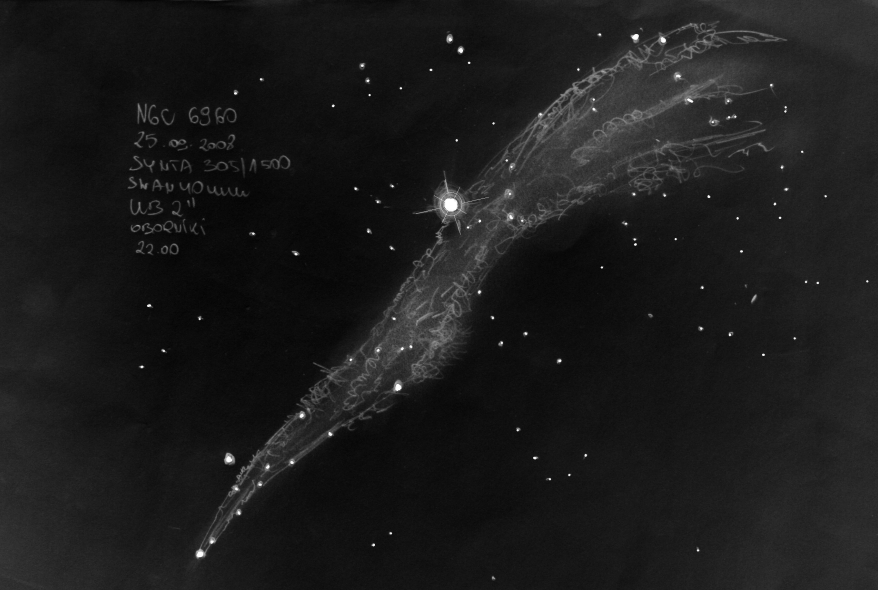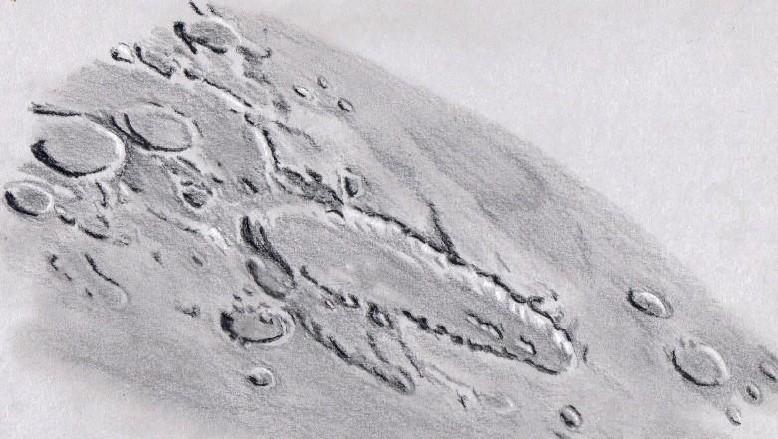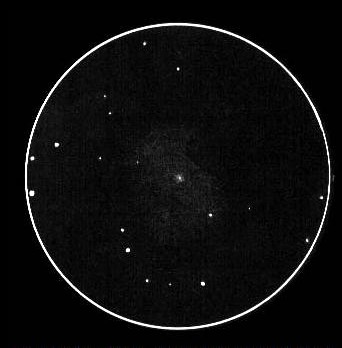
Galaxy NGC 5236 (M83)
Sketch and Details by Kiminori Ikebe
This galaxy is situated near the boundary of Hydra and Centaurs. It is a bright large barred-spiral, famous among the Messier objects. According to some sources, spiral arms should be visible but I have not seen them yet. Due to its low southern position, it is difficult to observe under excellent conditions. This sketch was made under less-than-perfect transparency.
A star-like, blurred nucleus stands out at the center. It is surrounded by extensive halo which shows uniform surface brightness without central brightening. The halo extends to the southwest and northeast direction, which indicates the presence of a bar structure, but it is not clearly visible. With careful observation the halo looks fan-shaped open to the northeast and north. A faint region is detected in the south. When checked against photographs, there should be two counter-clockwise arms around the halo I had sketched. Note* there is a second sketch:
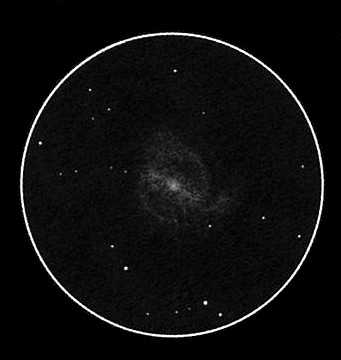
Galaxy NGC 5236 (M83) second sketch
Sketch and Details by Kiminori Ikebe
*In the second sketch made 5 years later under darker sky conditions, using a larger telescope and higher magnification the features such as the bar and spiral arms are clearly visible.
NGC 5236 (M83) Hya galaxy Difficulty level 2
Date of observation: 1997/02/01 04:25
Observing site:
Transparency/seeing/sky darkness: 2/2/3
Instruments: 32cm Dobsonian with TPL10.5 at 150x
Width of field: 0.3°
M83 (NGC 5236) Hya galaxy Difficulty level 2
Date of observation: 2002/02/16 04:29
Observing site: Kujyu
Transparency/seeing/sky darkness: 3/1/4
Instruments: 50cm Dobsonian with RA10 at 220x
Width of field: 0.2°
(I added the note because I felt these sketches should be posted together.
Frank McCabe)

